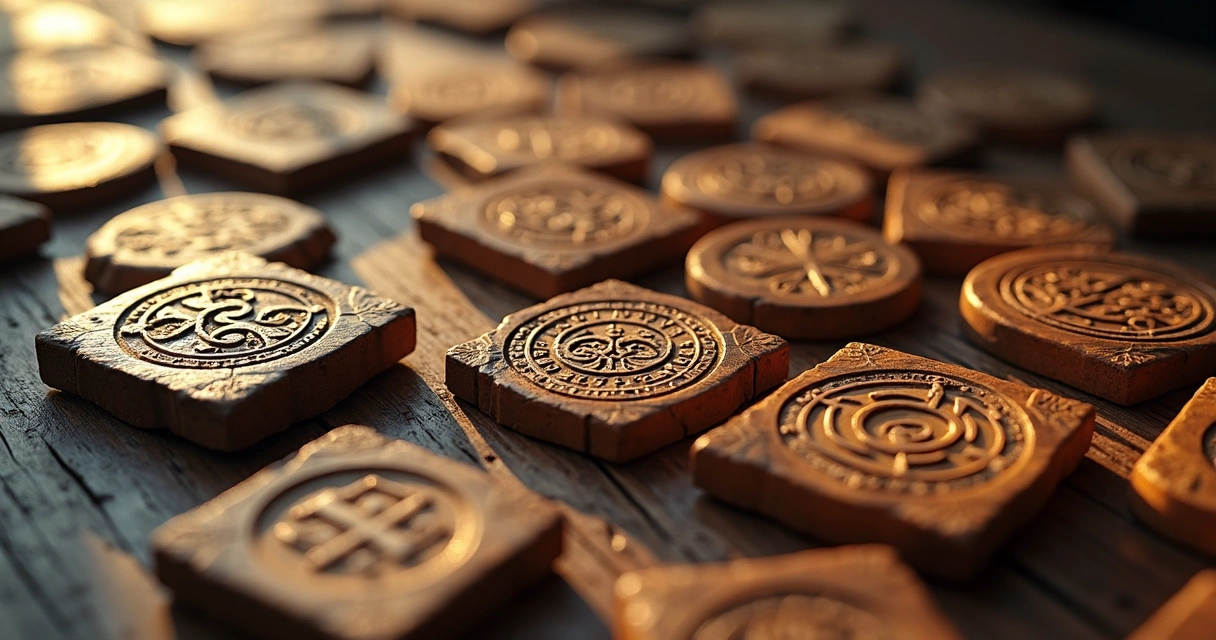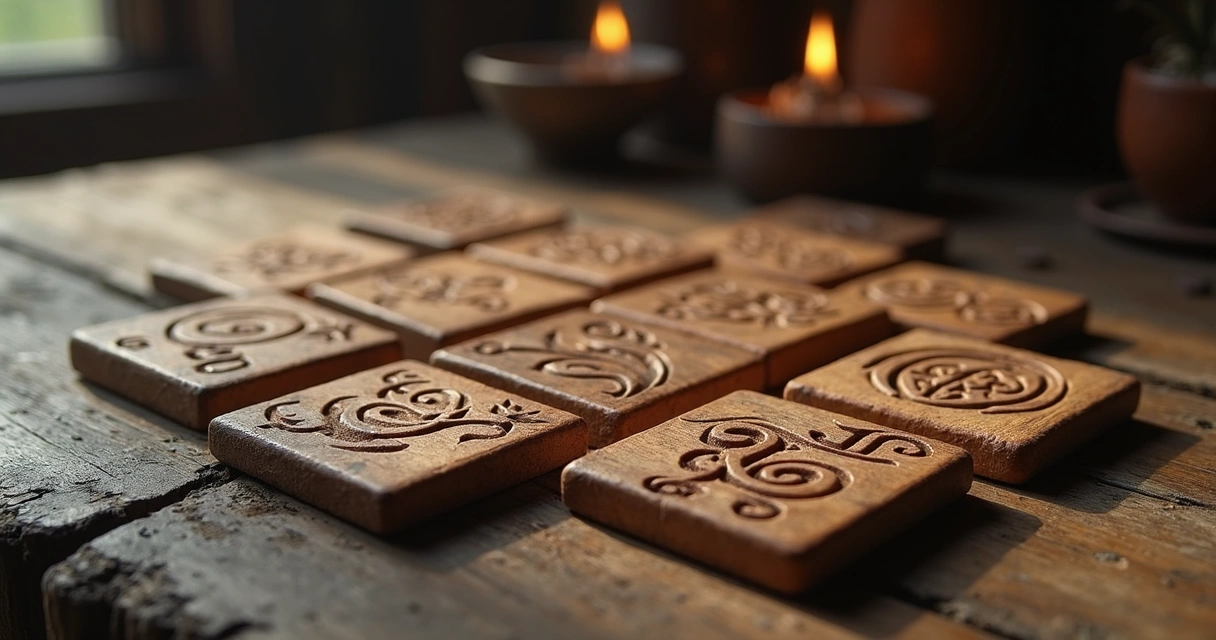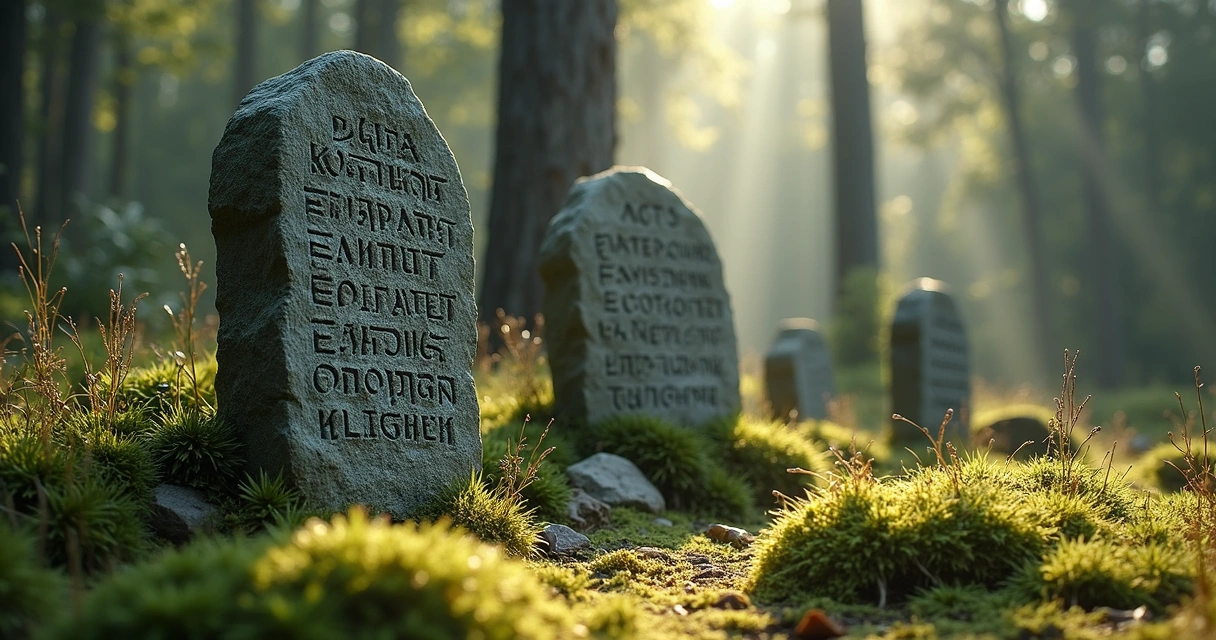When we hear the word “runes,” we may instantly picture angular carvings on ancient stones, mysterious alphabets whispered by icy northern winds. This is only the surface. The story - told in stone, wood, and memory - reaches deeper. In our shared work with Tarot, Runes, and Lenormand, we see runes as bridges. They help us move from the tangible to the subtle, from the everyday to the mystical. Are you ready to step onto this path with us? Let us walk the runic road together and find out: what secrets do the old symbols truly hold?
Tracing the beginnings: A brief history of runes
The journey of runes stretches back further than we can pretend to see clearly. Bits and pieces are left—marks on weapons, amulets, and memorial stones in Northern Europe. These marks first appeared during the European Iron Age, perhaps as early as the second century CE. No matter how long the stones have survived, the ideas behind them have outlasted even the stones themselves.
We find the origin of the runic alphabets not in a single place, but in a swirl of trade, war, and cultural mixing. Some believe the first true runes drew inspiration from Roman Latin script, perhaps even mingling with North Italic alphabets. Others claim something more home-grown. As we see it, the mixture is part of the magic—the way legends, trade, and migration left a set of symbols as powerful as they are mysterious.
 The elder futhark: The oldest runic alphabet
The elder futhark: The oldest runic alphabet
What most of us refer to as “Nordic runes” begins with the Elder Futhark. This script, named after its first six letters (F-U-TH-A-R-K), became the foundational set of 24 runes. Its earliest traces come from around 150-800 CE across areas that would become today’s Scandinavia, Germany, and beyond.
- The Elder Futhark contains 24 distinctive symbols.
- Each rune held a sound, a name, an image, and a web of meanings.
- Unlike alphabets used exclusively for writing, these runes appeared mainly on meaningful objects—graves, blades, talismans—each with a whisper of magic or a wish for protection.
The system remained mostly stable for centuries, its usefulness woven into daily life and ritual alike. The word ‘rune’ itself means ‘secret’ or ‘whisper’ in Old Norse.
The younger futhark: Changing times, changing runes
Around 800 CE, as the Viking Age dawned, the Elder Futhark shifted. Eleven symbols fell away, becoming the Younger Futhark, which included only 16 characters. This newer variant spread across the lands of Denmark, Sweden, Norway, and Iceland, adapting to evolving languages and new needs. Even with fewer symbols, the resonance of the runes deepened, showing that the meaning was never just in their number.
Two faces of the younger futhark
- The Long-branch runes: Primarily used in Danish regions, featuring pronounced, elegant lines suitable for stone inscriptions.
- The Short-twig runes: Common in Swedish and Norwegian areas, simplified for rapid carving on wood or bone.
Both scripts acted as flexible tools, but also as living inheritances—passed from generation to generation not just as writing, but as mystery and identity.
Other branches and evolutions
Beyond the well-known futharks, there were regional scripts like the Anglo-Saxon Futhorc (used in England), each making subtle choices and tweaks. Some communities invented their own secret runes, adding or replacing characters as local needs and magical practices changed. Yet the beating heart of runic study and use remains the classic Norse sets—Elder and Younger Futhark.
The everyday and the magical: Runes as alphabet, carrier, and charm
Runes, in their earliest use, were both ordinary and extraordinary. On one hand, they functioned as an alphabet—spelling out names, places, messages, and boasts. On the other, each symbol was packed with so many layers: sounds, objects, animals, aspects of nature, prayers, and destiny.
 Speaking and naming the world
Speaking and naming the world
Within daily use, runes might have been scratched onto property or weapons to claim ownership or achievements. At the same time, they carved wishes for luck or strength into amulets, expressing personal hopes or calls to higher powers.
Runes speak as much of magic as of monuments.
- As letters, runes created meaning out of sound.
- As symbols, runes created meaning out of the world itself—birch trees, cattle, joy, need.
In this duality, we find why runes survive. They are not just letters, but ideas made tangible.
Magical layers: Runes as forces
Ancient Norse culture taught that things named could be awakened. So to carve or chant a rune was not just to write a word, but to summon a quality—protection, love, fertility, destruction. This is where magic lives. Even today, when we lay out runes for divination or meditation, we are echoing this practice. The symbols hold just as much potential as we bring to them.
Sometimes, runes were carved, colored with red ochre, and “fed” with offerings. The very act of making a rune was itself a spell.
Odin and the gift of runes: Myth and legend at the core
We can’t tell the story of Norse runes without stepping into the world of myth. In Norse legend, the gift of runes came directly from Odin, the chief god. It’s a story of sacrifice, vision, and mystery.
As told in the Hávamál (“The Words of the High One”), Odin hung for nine nights from the branches of the World Tree, Yggdrasil, wounded by his own spear. He sacrificed not his life, but his ordinary self—gaining, in return, knowledge of the runes. He did not receive them from another; he found them in the depths of pain and devotion.
 What does this myth teach? Perhaps, that wisdom is hard won, not given lightly. Runes, as Odin discovered, are “secrets”—they require sacrifice and focus. Their knowledge belongs not to the casual seeker, but to the one ready to look beyond the surface.
What does this myth teach? Perhaps, that wisdom is hard won, not given lightly. Runes, as Odin discovered, are “secrets”—they require sacrifice and focus. Their knowledge belongs not to the casual seeker, but to the one ready to look beyond the surface.
Runes are gifts claimed from darkness and silence.
Every time we work with runes, in readings or meditations, we echo Odin’s quest for deeper sight.
Other gods, other stories
While Odin stands central, other Norse deities and spirits move within the orbit of runes. Freyja, goddess of magic and fertility, has close ties to runic spells. Loki, trickster and changer, can upend or confuse rune readings. The norns, the mysterious weavers of fate, are often depicted tracing runes to record destiny.
- Odin: Wisdom, sacrifice, initiation, leadership
- Freyja: Transformation, love, intuition, seiðr magic
- Norns: Fate, destiny, inevitability
- Loki: disruption, transformation, shadow
The meaning of major runes: Symbols, stories, and uses
Each rune tells several stories at once. In our experience, it helps to go beyond memorization—think of these as living symbols. The Elder Futhark, still the most widely used system for divination and esoteric study, offers 24 runes. Below, we present the most influential, with their English sound, symbolic essence, and some interpretive notes.
Interpreting the elder futhark
- Fehu (F): Cattle, wealth, earned abundance, beginnings. In readings, Fehu represents gains, opportunities, and value—but also the need to safeguard what has been achieved.
- Uruz (U): Aurochs (wild ox), physical strength, primal power, courage. Suggests health, action, endurance. Sometimes, a necessary challenge.
- Thurisaz (TH): Thorn, giant, gateway. Protective but risky, asks for caution or bold action against obstacles.
- Ansuz (A): God, Odin. Inspiration, communication, insight, messages from spirit.
- Raidho (R): Journey, rhythm, movement, cycles. Progress, travel, perhaps a need for order or timing.
- Kenaz (K): Torch, knowledge, creativity, illumination. A sign of learning, teaching, or revealing secrets.
- Gebo (G): Gift, partnership, exchange. Balance, generosity, and sometimes a literal gift.
- Wunjo (W/V): Joy, fulfillment, harmony. Indicates happiness, success, or a united group.
Each rune begins as a sound and ends as a story.
- Hagalaz (H): Hail, disruption, sudden change. Upset routines, tests, but possible renewal after the storm.
- Nauthiz (N): Need, necessity, limitation. Endurance, resilience, lessons learned from hardship.
- Isa (I): Ice, stillness, stasis, waiting period. Sometimes patience, sometimes a warning against force.
- Jera (J/Y): Year, harvest, natural cycles. Rewards for past efforts, time to reap what’s been sown.
- Eihwaz (EI): Yew tree, transformation, resilience, protection. Growth through endurance, integrity.
- Perthro (P): Cup, mystery, fate, chance. Secrets revealed, the unknown becoming known, luck.
- Algiz (Z): Elk, protection, higher self, guiding force. Safety, guardianship, connection to the divine.
- Sowilo (S): Sun, success, clarity, illumination. Triumph, personal power, destiny unfolding.
The human and cosmic end
- Tiwaz (T): Tyr (the god), justice, honor, sacrifice. Integrity, resolution of conflict, courage to do what is right.
- Berkano (B): Birch, new beginnings, birth, nurturing. Growth, family, or creative fertility.
- Ehwaz (E): Horse, movement, trust, harmony with others. Partnership, progress made together.
- Mannaz (M): Humanity, the self, connection to others. Reflection, personal growth, cooperation.
- Laguz (L): Water, intuition, flow, emotion. Flexibility, psychic development, cleansing.
- Ingwaz (NG): Seed, potential, internal growth. Dormant energy, gestation, quiet strength.
- Dagaz (D): Dawn, breakthrough, new era. Hope, pivotal change, enlightenment.
- Othala (O): Ancestral inheritance, home, roots. Family, tradition, spiritual DNA.
 In our readings, these symbols rarely point in only one direction; each rune has light and shadow, challenge and gift, much like the stories behind them.
In our readings, these symbols rarely point in only one direction; each rune has light and shadow, challenge and gift, much like the stories behind them.
Reverse and merkstave meanings
Unlike Tarot, runes weren’t all meant to be “reversed.” However, some symbols are read differently if drawn upside down or sideways—the so-called “merkstave” position. Some traditions attribute blocked energy, challenges, or delays to such appearances, but we see it as another invitation to nuance, never as simple misfortune.
- Is Reversed reading necessary? For some, yes. For others, no. Our advice: let intuition guide you, and notice patterns over time.
Runes in divination: Shaping fate and future
Most modern students and professionals meet Norse runes through divinatory arts. Runes are used to ask questions, find insight, or receive guidance—much like Tarot or Lenormand, but with their own flavor. To cast the runes is to open a conversation with patterns, fate, and the wisdom of old.
The practice: How to use runes for divination?
There are as many ways to work with runes as there are readers, but common methods persist. Many use sets of rune stones, tiles, or sticks, each marked with a symbol from the Elder Futhark (or sometimes the Younger). These are drawn from a bag or scattered onto a cloth, then interpreted either singly or in groups.
- Formulate a clear, honest question. The more sincere, the clearer the results.
- Center yourself, connecting to breath or intention. Some call on Norse deities or ancestors for focus, but quiet will do.
- Draw or cast one or more runes. Pay attention to how they fall—their orientation and grouping matter.
- Interpret in context. A single rune gives a direct answer; three or more can outline past, present, future or offer a layered story.
The runes speak in patterns, not absolutes.
Simple layouts and spreads
- Single Rune Draw: Straightforward, addresses the essence of the question.
- Three Rune Spread: Often past-present-future, or situation-challenge-outcome.
- Runic Cross: A more elaborate layout for nuanced insight (like a “cross” or “star” with intersecting runes).
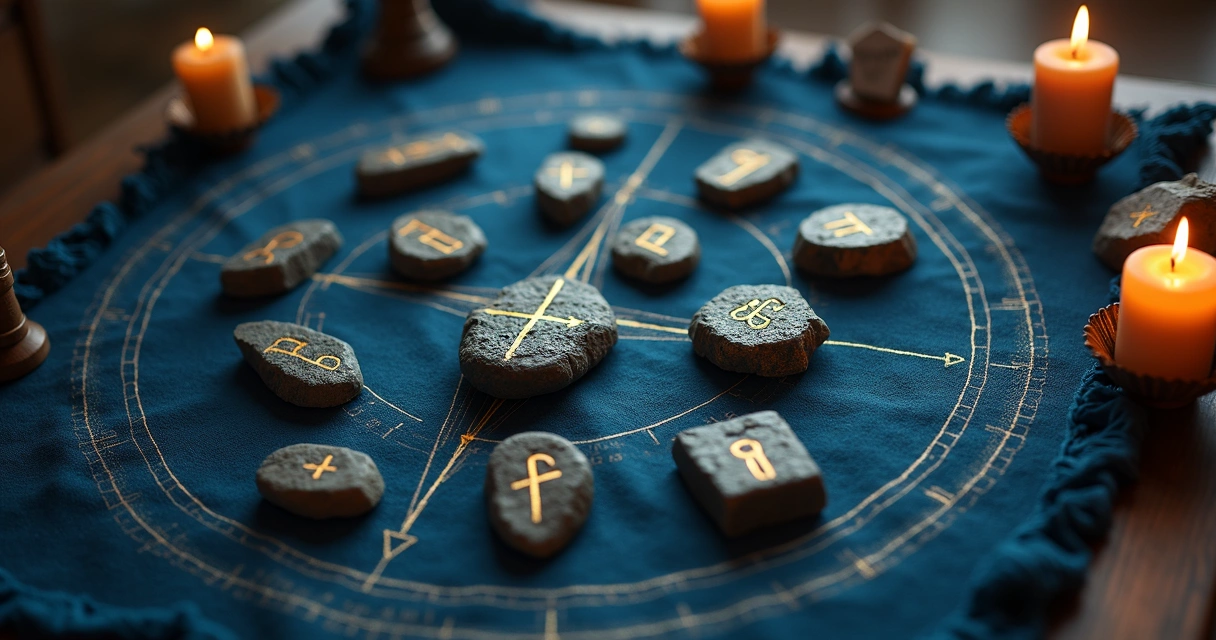 Some practitioners also combine runes with Tarot or Lenormand for a richer reading. Combining tools, in our experience, produces new insight—the runes often cut to the core while Tarot unfolds the details.
Some practitioners also combine runes with Tarot or Lenormand for a richer reading. Combining tools, in our experience, produces new insight—the runes often cut to the core while Tarot unfolds the details.
Common pitfalls for new readers
- Don’t force an answer. Runes prefer honesty and clarity; confusion tends to echo back in the results.
- Don’t panic at “negative” runes. Hagalaz, Nauthiz, and Isa can feel heavy, but rarely forbid—they invite deeper reflection.
- Keep a journal. Record each drawing, the context, and your impressions. Over time, patterns appear, and personal meaning grows.
We have found that rune practice blossoms slowly. Like Odin, the true gift comes with commitment and respect.
Symbols of fate and destiny
Runes deal in the mysteries of fate. Norse belief didn’t see destiny as fixed, nor as entirely free-willed. Life spun from the Norns’ loom, but your choices mattered—the thread could twist, tangle, or strengthen.
Runes help us name the patterns in our fate, not set them in stone.
You’ll notice that many runes suggest cycles: Jera (the harvest), Dagaz (the dawn), Isa (waiting), Berkano (new life). Instead of assigning a single destiny, we see these as invitations: what season are you in? Who are you becoming? Which cycles can’t be rushed?
- “Negative” runes such as Hagalaz or Nauthiz show inevitable periods of hardship—yet every winter ends, every seed pushes through.
- “Positive” runes remind us to move with gratitude; Fehu gives, but must also be tended. Wunjo brings joy only if we participate.
This cyclical vision of time and fate feels especially meaningful in divination. We remind ourselves that change is the only constant, and the runes provide perspective—sometimes comfort, sometimes warning, always clarity.
Runes and magic: Beyond fortune-telling
In the old world, runes did not merely describe fate or mark objects—they participated in shaping reality. Runes were spoken, sung, scratched, and painted, used in charms and spells with as much weight as in readings.
Runic magic: Making the unseen seen
We know from myth and archaeology that certain runes (or combinations) were engraved on amulets for health, luck, victory, or protection. Warriors wore them into battle; women pressed them into bread for fertility; families hung them on doors against harm.
- Inscription: Carving runes onto wood, stone, or metal gave the intention a lasting home.
- Color: Often runes were colored with red pigment, the hue of life force.
- Chanting: “Galdr” (sung spells), used runic names and sounds to call up power.
 When we integrate runic magic into modern readings or rituals, we are not just “telling the future;” we are engaging with the world as malleable. Each rune placed, spoken, or worn, is a choice—a statement that magic is available, and that patterns can be shifted.
When we integrate runic magic into modern readings or rituals, we are not just “telling the future;” we are engaging with the world as malleable. Each rune placed, spoken, or worn, is a choice—a statement that magic is available, and that patterns can be shifted.
How runes support readers and seekers today
Today, whether we’re guiding clients with Tarot, reading for ourselves, teaching, or learning, runes serve as powerful partners. Most runic workers we know value their independence, and yet, the runes link us across centuries. They communicate with the past even as they answer questions of the present. This living tradition is what keeps the runes present in so many practices worldwide.
Integrating runes into modern reading practice
- As a stand-alone tool: Runic spreads provide direct, succinct answers—great for simple questions or quick insights.
- As a support to Tarot/Lenormand: One or two runes drawn alongside a card spread can clarify overall energies or highlight hidden influences.
- As meditation prompts: Rune symbols, chanted or visualized, can deepen focus and personal exploration.
- In magical work: Runes can be incorporated into intention-setting, spellcraft, or ritual installations.
Many Tarot or Lenormand professionals find that runes “cut through” the noise, revealing foundational forces at play. Meanwhile, those new to runes often enjoy their tactile, hands-on quality. Each stone is different. Each mark feels personal. As professionals, we encourage our students to trust both tradition and intuition—reading from books, yes, but also keeping their own journals and reflections close.
For students: Learning the language of the north
If you are beginning with Norse runes, we think a stepwise path works best:
- Acquire a simple set—stones, wood, or cards, as long as you resonate with the feel.
- Start with the Elder Futhark, 24 runes. Learn their basic meanings, sounds, and mythic stories.
- Practice single draws and keep a daily journal—ask a question, draw a rune, and write down what you notice.
- Expand to three-rune spreads after a few weeks; the interplay is where true insight grows.
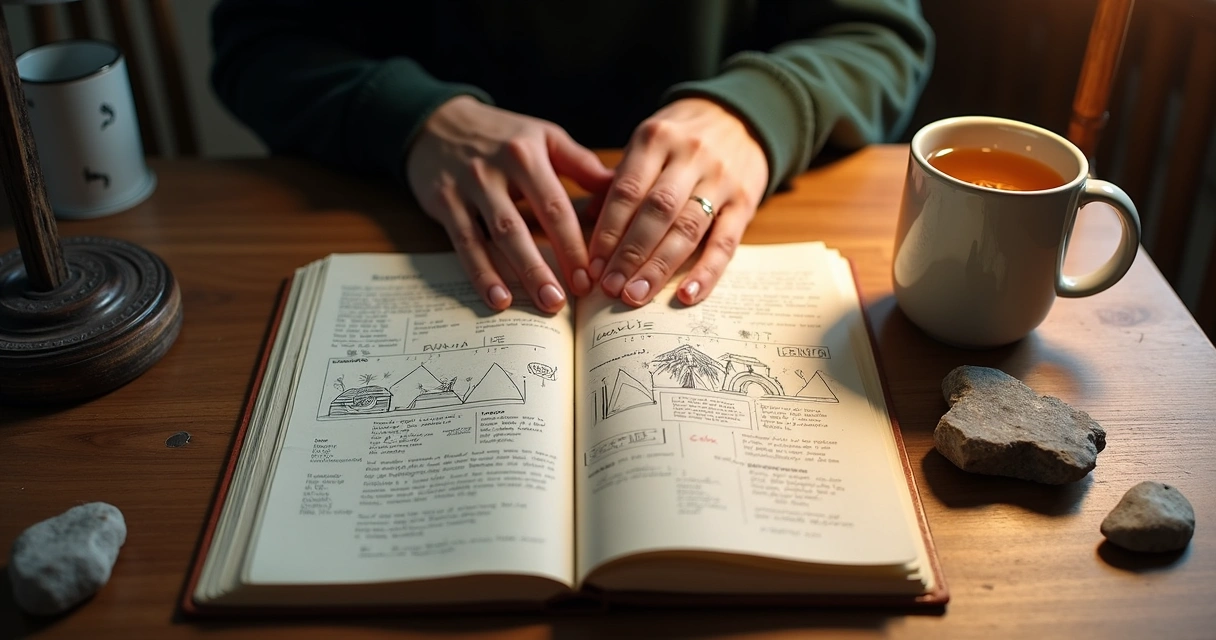 Patience and curiosity matter more than memorization. Runic wisdom is less about finding “the answer” and more about learning to see hidden patterns. Our experience matches what the old stories suggest—true knowledge grows by doing.
Patience and curiosity matter more than memorization. Runic wisdom is less about finding “the answer” and more about learning to see hidden patterns. Our experience matches what the old stories suggest—true knowledge grows by doing.
For professionals: Adding depth and clarity
If you are already versed in Tarot, Lenormand, or another system, runes can add a unique dimension to your toolkit.
- Open or close your reading with a single rune—ask for the overarching energy or theme.
- Use runes to clarify ambiguous cards, particularly when a reading feels stuck or directionless.
- Invite clients or students to pick a rune from a bag, letting intuition lead the way.
- For advanced practice, try integrating rune stones into crystal grids or other ritual setups.
Combining these practices can highlight recurring issues (like fate, patience, or sudden shifts), encourage client engagement, and make each consultation more memorable. Every reader finds their own rhythm, but runes tend to encourage clarity and boldness.
The mystical thread: Why runes matter in esoteric tradition
Runes are not only historical artifacts, but living energies. Their simplicity hides a subtle complexity—combining language, story, and spirit. We see this duality in everything about them:
- They are tools for the everyday and the extraordinary.
- They tie the present to the past, connecting our hands to ancient ritual.
- They offer insight, but demand engagement—they refuse easy answers.
Perhaps what pulls us back to the runes, generation after generation, is their honesty: they reflect back exactly what we put in—intention, persistence, questioning, and care.
Runes are both question and answer, key and lock, past and future.
Whether you are seeking guidance, learning a new system, or hoping to add more magic to your practice, the runes stand ready. Each carving, each cast, invites you to a conversation that stretches back to the time of legends and forward to whatever future you wish to create.
Practical ways to deepen your connection with runes
It all starts with direct engagement. For those longing for guidance, structure, or a little inspiration, here are a few accessible practices we have seen work for both newcomers and experienced readers.
Constructing your own runes
- Find natural materials—stones from a river, branches from fallen wood, or clay shaped by hand.
- Carve or draw each of the 24 symbols (Elder Futhark) with care and attentiveness.
- Imbue each piece with a moment of quiet intention, naming aloud or in thought what the rune represents.
- You can anoint or color runes to connect them further to your intent—some use natural dyes, others leave them plain.
This act of creation weaves personal energy into your tools. Over the years, we’ve noticed such crafted sets almost always “speak” more clearly.
Creating a ritual or reading space
Your rune readings or meditations don’t require elaborate temples—a windowsill, a quiet garden, or a simple cloth will do. Some prefer to use incense, light candles, or keep a journal nearby. The intention is to set aside ordinary time and step into sacred awareness. When distraction seeps in, pause, and refocus. Trust the space you’ve made, no matter how humble.
Some create “casting cloths”—fabric marked with runic or directional patterns—as backdrops for readings. These don’t need to be fancy; intuition and care matter more than materials.
Daily rune practice and study
- Pick a rune each morning. Reflect on its meaning, and watch how its theme weaves through your day.
- Keep a notebook where you record questions asked, runes drawn, and meaningful insights or patterns.
- Pair runes with breathing exercises or meditation; visualize the rune’s shape, repeat its name, and notice any shifts in feeling or awareness.
- Draw connections to your other studies—compare runes with Tarot suits, Lenormand symbols, or dream imagery.
Over time, these daily moments make runic wisdom a lived habit, rather than a memorized fact.
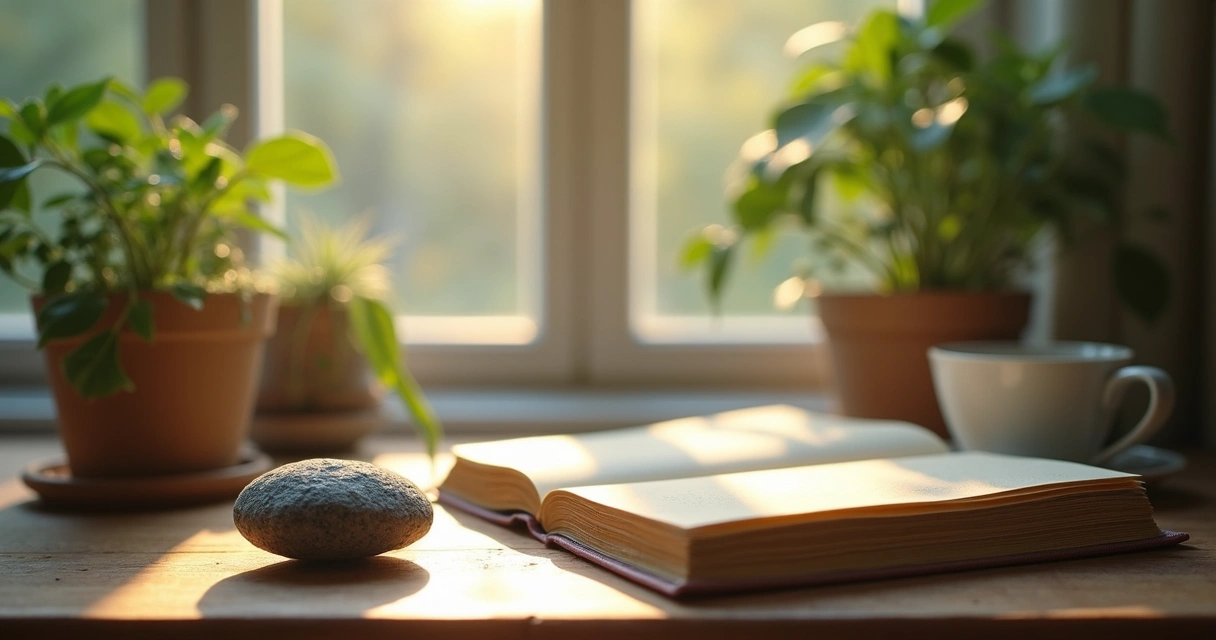 Common questions and misunderstandings
Common questions and misunderstandings
Runes, like any ancient magical system, can be misunderstood or misrepresented, both by enthusiasts and skeptics. In our collective experience, here are a few clarifications that help students and clients grasp the practice more accurately.
Runes and “fortune-telling”
Some expect runes to predict specific dates, names, or events. Instead, runes speak of energies, patterns, cycles—offering guidance rather than prophecy. They show likely paths, not fixed endpoints. Anyone promising absolute certainty misunderstands the runes’ nature; ambiguity is part of their wisdom.
Are there “good” or “bad” runes?
Every rune, like every card or omen, carries both positive and challenging aspects. Hagalaz brings disruption, but also renewal. Isa suggests stasis, but also patience. Trusting the process allows meaning to unfold without rushing to judgment.
Can anyone read or use runes?
Yes. While some traditions or lineages attach specific initiations or rituals, the simple act of earnest study and sincere intent is enough to begin. The runes reward curiosity and readiness, not credentials. That said, respect for the tradition, careful record-keeping, and a willingness to be changed are all helpful attitudes.
Do you need to be Norse or Scandinavian to work with runes?
The short answer is no. These symbols emerged from Northern Europe, but their spirit is universal. Anyone approaching with respect and care—no matter their ancestry—can learn from and with the runes.
Conclusion: The legacy of runes continues
We see the Nordic runes not just as relics, but as companions—alive in every carving, every chant, every quiet moment of questioning. Their journey from the age of Vikings to our modern digital world is nothing short of remarkable. Through futharks old and new, through myth and ritual, these symbols have always held space for seekers willing to listen.
In practice, runes remind us that language and magic were never truly separate. Each sign opens a new doorway, offering a chance to connect with an inheritance larger than oneself. Fate bends to courage, patience, and choice. Destiny is written, but also waiting to be re-written.
May every future reader, student, or professional find their own rhythm with the runes, and add their story to this ongoing, ancient song.
Frequently asked questions on Nordic runes
What are Nordic runes used for?
Nordic runes are used both as alphabetical signs and as symbols for divination, protection, magic, and meditation. In practical terms, people mark them on amulets for success or health, draw them for insight in readings, or work with them in rituals to shape intention and invite guidance.
How do I read rune meanings?
Reading rune meanings starts with knowing each rune’s basic sound, name, and traditional associations. We recommend beginning with single rune draws, reflecting on its significance in the context of your question. With practice, you can use more complex spreads. Over time, personal association and journaling help deepen your understanding, and intuition can guide interpretation almost as much as established lore.
Where can I buy authentic Nordic runes?
You can find Norse rune sets through artisan craft shops, local metaphysical stores, or online sellers offering items made from wood, stone, or bone. If authenticity and connection matter to you, we often recommend considering handcrafted or local artists, as these sets tend to carry more personal energy than mass-produced versions.
Are runes effective for divination?
Many users report that runes offer relevant, insightful answers to questions about spiritual growth, choices, and life’s patterns. While effectiveness depends on the intention and skill of the reader, runes consistently reveal themes, obstacles, and opportunities when approached with patience and sincerity.
How do I cast runes for magic?
To cast runes for magic, decide on your intention—protection, clarity, success, and so on. Select or cast runes that resonate with that purpose, and inscribe, chant, or arrange them as fits your ritual. Many choose to combine the runes with other tools like candles, herbs, or affirmations. The most meaningful results often come from personalizing both your materials and your ritual process. As with all magic, respect and focused intention are key.

